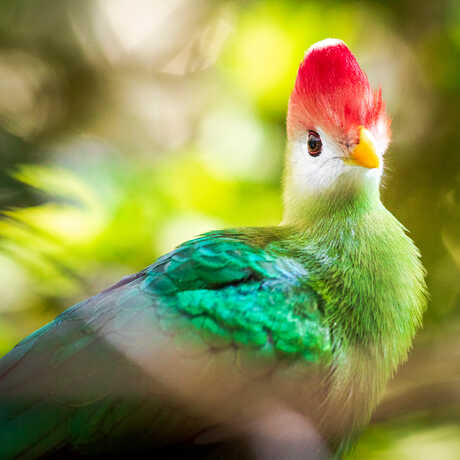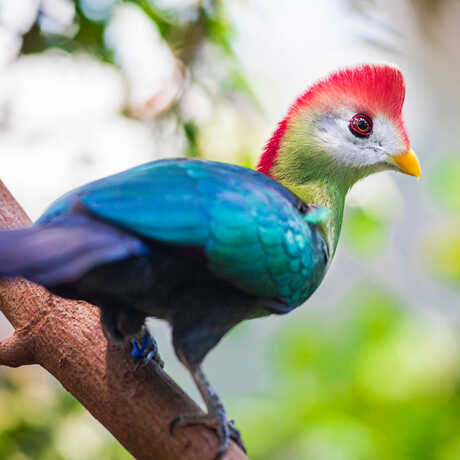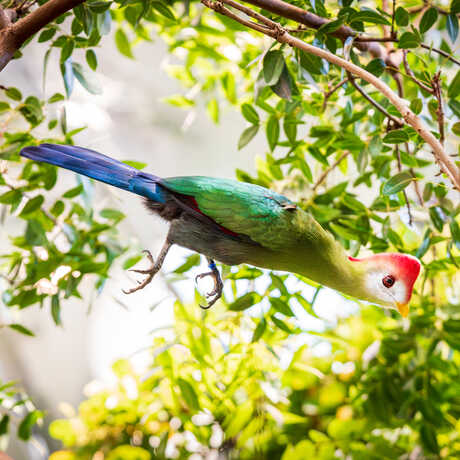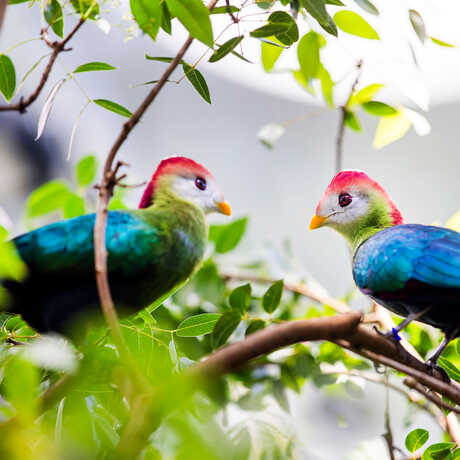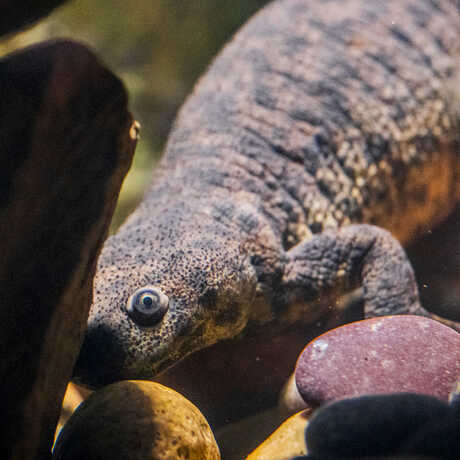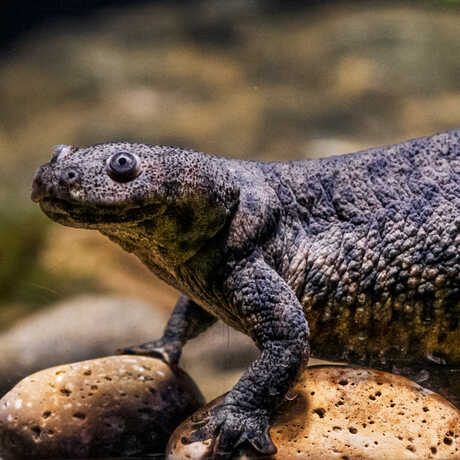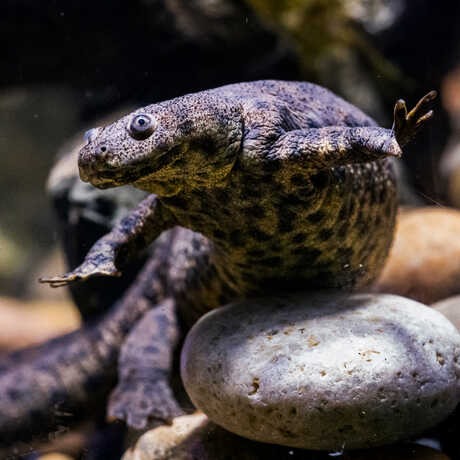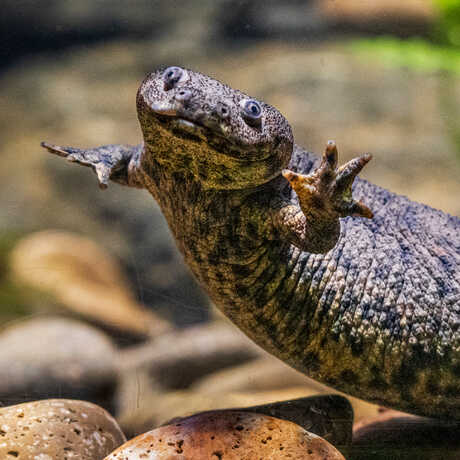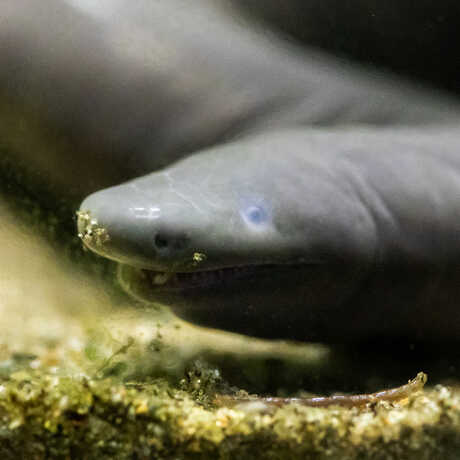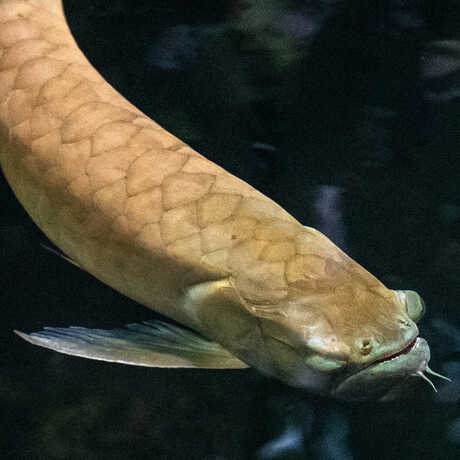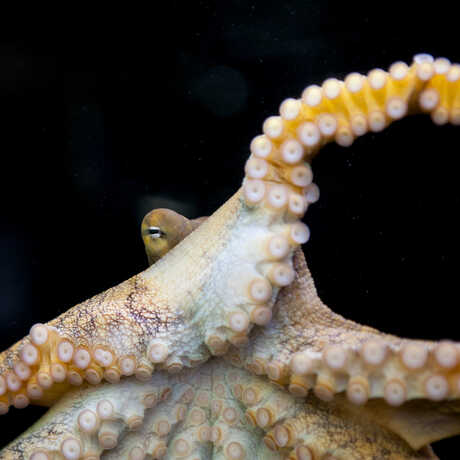What's New in the AQ?

Steinhart Aquarium is one of the most biodiverse aquariums on Earth, home to more than 1,000 species. And we recently added five more! As you plan your visit to the Academy this summer, be sure the following creatures are on your must-see list: Red-crested turacos, striped burrfish, Iberian ribbed newts, water scorpions, and tentacled snakes.
Time to meet the new kids. We’ll start with the loudest.
Scarlet and Skittles, our red-crested turacos (Tauraco erythrolophus), made their Osher Rainforest debut in May and have been the squawk of the town ever since.

With their scarlet mohawks, shimmering emerald and sapphire wings, and impossibly red primary flight feathers, these birds are like flying jewels. But their coloration is no trick of the light. Unlike birds whose colors are produced by refracted light, red and green turaco feathers contain turacin and turacoverdin—pigments found in no other bird on Earth.
Native to the forests of western Angola, red-crested turacos are the first African bird species to inhabit the dome. Scarlet and Skittles, a female and a male, are also part of a Species Survival Plan that will help maintain genetic diversity among populations in human care.
The question is: Will they or won’t they? We hope they realize how much they have in common (single, stunning, love bananas) and turn the rainforest into their literal love nest.
Animals aren’t people. Anthropomorphism is frowned upon. A science blog should be a serious endeavor. But there’s an exception to every rule. This one’s named Darren, he has his own Instagram, and I think he’s the love of my life.

I recently sat down with Darren the striped burrfish (Chilomycterus schoepfi) in the Water Planet exhibition during a Tuesday morning Member Hour. He eyed me warily from his rocky hideout before swimming over for a closer look.
Each of his spherical eyeballs moved independently as he sized me up, and his rigid mouth, adapted to crunch hard-shelled prey, made it look as if he was mid-sentence. His mesmerizing maze pattern only deepened his allure.
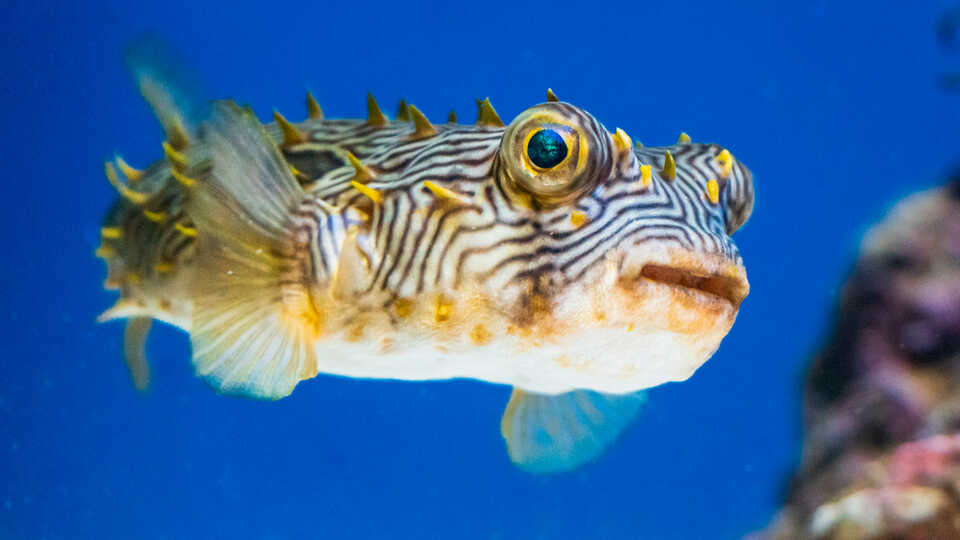
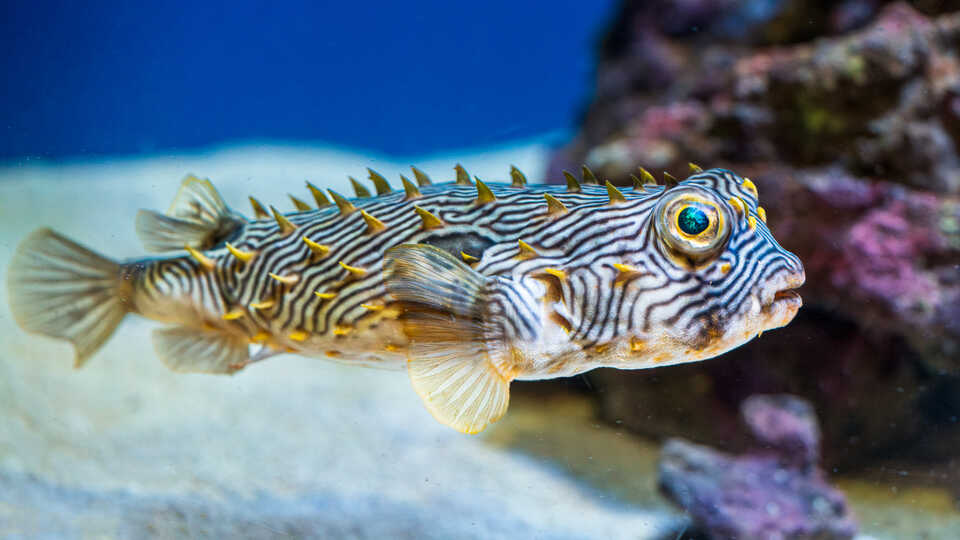
I held my breath, not wanting to startle my companion into accidentally inflating himself. (With a few gulps of water or air, burrfish, like their pufferfish cousins, can balloon their bodies to deter predators.)
After a few minutes, Darren decided our visit was over and maneuvered his boxy body back to his nook. I walked back to my desk and wondered: How can a face that can’t move be so moving?
You’d look pretty smug too if you were basically one of the X-men.

Iberian ribbed newts (Pleurodeles waltl) have three big reasons to brag:
- They’re Europe’s largest newt species, growing to 12 inches in the wild.
- They’ve been to space, and there’s video evidence.
- They can poke their razor-sharp ribs through their skin Wolverine-style, coat them in a toxic secretion, and sting potential predators.
Our newts aren’t on anyone’s menu, and are content to chill underwater in their Venom: Fangs, Stingers, and Spines habitat. But if you ever find yourself on the business end of a poison newt rib, don’t panic: Their poison is harmless to humans, and their robust immune systems and fast-healing skin help them recover quickly.
Unlike Darren or the newts, our water scorpions (Ranatra quadridentata) were uninterested in my presence. They had bigger fish to fry—or rather, stab with their proboscis, inject with venom, and liquify.

Resembling a stick insect with a praying mantis’s forelegs, these 3-inch predators are virtually indistinguishable from surrounding vegetation—and invisible to prey.
I encountered two of them hanging upside down from a submerged branch in their Venom: Fangs, Stingers, and Spines tank, completely motionless, forelegs ready to spring into action to deliver a fatal embrace to an oblivious invertebrate. Be warned: This exhibit is a nail-biter!
Rounding out our quintet of new creatures is the tentacled snake (Erpeton tentaculatum)—the only snake on Earth with two antenna-like appendages on its head!



Another camouflage expert, this snake can be tricky to find in its Venom: Fangs, Stingers, and Spines habitat. If at first you don’t see it, question everything: Is that branch real...or does it have fangs?
Tentacled snakes have another claim to fame: They’re extremely clever. After sensing prey with its twin “tentacles,” it will wiggle its body in such a way that induces its meal to move toward its awaiting jaws. Watch this video to see it in slo-mo.
